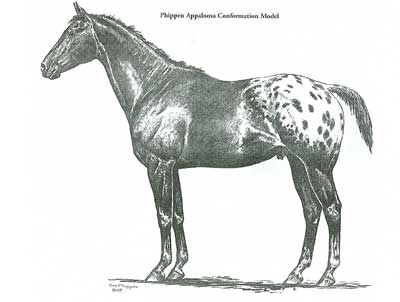
|
 |
 |

About True Appaloosas

Welcome! My name is Ken Kirkeby and my mission is simple and that is to breed and start the very best foundation Appaloosas for riding pursuits such as hunter/jumper, roping, reining, cutting, polo, polocross, fox hunting, big game hunting, and ranch work - capable horses and friends for the family.
Why Appaloosas? Because I believe the True Appaloosas to be the best all-around using horse.
Having been involved with horses on and off since childhood, I always had an affinity for the uniqueness and versatility of the Appaloosa yet I knew little about them. Later in life, certain events caused me to spend years studying the breed. What I eventually learned about Appaloosas astounded me and changed my life the way few things had. Several years ago, I decided to devote the remainder of my life to perpetuating this remarkable breed.
The traditional foundation horse -- the True Appaloosa -- is a miracle of survival. Although its origins are foreign, the foundation Appaloosa is, without question, our oldest and most distinguishable breed.
It is the present state of the horse world to focus narrowly on one's discipline and venture no further. Jumpers circle the ring. Reiners come to sliding halts. Ropers chase steer after steer. Polo ponies chase the ball and halter horses stay in their stall. My fascination with horses harks back to their original use, before our world became paved and overrun with cars. Prior to the automobile, horses were too large a part of everyday life to be as specialized as today. Horses provided transportation, pulled loads, hunted game, worked livestock, and for thousands of years, provided mobility in warfare. Horses of early America had to be sturdy, sound and tractable, calm enough for the children to ride to town. It wasn't all that long ago, not much more than my lifetime in fact.
Nowadays, competition is keen and costs and prize monies for equine sports are high. The trend is toward "disposable" horses that are pressured hard at young ages. By age 9, some much younger, many of these specialized horses are used up. What I learned from some very good trainers is that at age 9, a well-trained, well-cared for horse is just getting started. I fully expect every one of my babies to have a useful life well into his 20's. My confidence in this is clearly expressed in my sales contract. When you purchase a foal from me I retain the first right to repurchase him.
Having used horses in hunter/jumper, mountain packing, polo, hunting for elk, mule deer, mountain lion and wild boar, farm and ranch work, I have come to appreciate the all-around horse - the one that does any job you ask. Such a horse is sound, sure-footed, and athletic enough to carry riders of all experience levels through their chosen pursuit. Yet, this horse must be manageable enough for children and new riders.
My experience with different breeds including Thoroughbreds, Quarter Horses, Morgans, Tennessee Walkers and even BLM Mustangs has led me to believe that the ideal using horse is the Appaloosa. An analogy I like is something I once heard from a Porsche spokesperson about the versatility of the 911 model. "For years, the 911 was the consummate sports car. You won a rally with it on Saturday morning and picked up groceries with it on the way home. It was the all-around family sports car."
And so is the True Appaloosa horse. It's not enough for a horse to have great conformation and athletic ability if he's too hot or difficult to handle for most riders. Conversely, even the gentlest horse with the sweetest disposition can be dangerous if he can't keep his feet in rough country. Either horse can get you injured if he's not up to the job at hand.
Once the Appaloosa became my preferred breed, I discovered that is was nearly impossible to find the traditional type. Because of indescriminant out-crossing, nearly all of the so-called "Appaloosas" I saw were Quarter Horses, Arabians, and Thoroughbreds with spots on their rumps! Just about any horse with spots or mottled skin was loosely and incorrectly being referred to as an Appaloosa. What these outbreeds actually were were horses that happened to have some Appaloosa markings.
What is a True Appaloosa? They are small horses ranging from 14.2-16 hands. Their weight is proportionate to their frame. They are a well-balanced, middle-of-the-road horse. The Appaloosa should be well-muscled, symmetrical and smooth, have prominent withers and a short back. They are not high-hipped, excessively tall or heavy, exceptionally refined or overly muscled. Generally, their tails are naturally short and manes are upright and can appear roached or zebra-like. A True Appaloosa can have a colorful coat and must have mottled skin about the mouth and white sclera around the eye (like a human being). Many have vertically stripped hooves and large heads. When you have learned what a True Appaloosa looks like you will recognize the frauds in an instant.
We are located in North Texas, just outside of Decatur, about 45 min from DFW airport. We are a small operation that puts an exceptional amount of effort into each horse. I invite you to contact us and arrange for a visit to see what we believe to be the world's best horses.
I would like to thank Palmer J. Wagner of Colbert, Washington for his research on the Appaloosa his permission to reprint the "Mongol Rider" painting. I would also like to thank Dr. Francis Haines for his devotion to the Appaloosa breed and to the Appaloosas Horse Club for allowing me to reproduce images from their archives.
|
| Back | Top | Next |
|
 |

